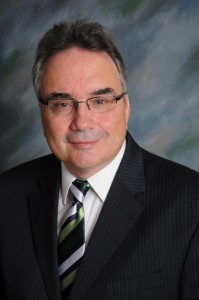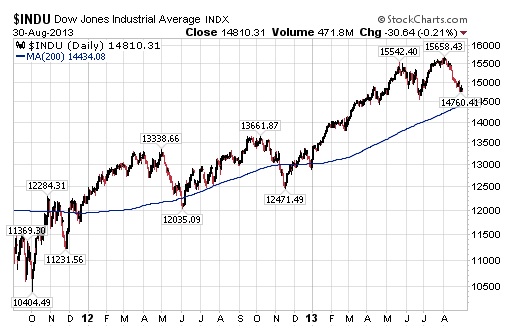 A result like this hasn’t surprised me for years because one man showed me that the stock market is not remotely close to what so many have tried to make us think it is. Heck, not even 1 out 4 so-called money managers can even match or surpass the index they’re matched up again (translation – better to buy an index fund versus any other).
A result like this hasn’t surprised me for years because one man showed me that the stock market is not remotely close to what so many have tried to make us think it is. Heck, not even 1 out 4 so-called money managers can even match or surpass the index they’re matched up again (translation – better to buy an index fund versus any other).
As noted in my book, one man would forever change the way I look at finances. Frank Congilose taught me that 99% of all so-called advisers will fail—not because they’re dishonest but because their approached is badly flawed. And Frank is the only person I ever met among the thousands over 30 years that is both very bright and very honest. In my experience, an especially smart person usually tries to push the envelope (if not go into gray areas), and if they happen to be the minority that is totally honest, they are far from “Rocket Scientists.”
It was about 15 years ago when Frank first ruined my day by basically showing me everything I was told in the first half of my career was doomed to fail. He then proceeded to show me a process that truly offers far less risk, an opportunity for a far better lifestyle and no additional capital in order to achieve goals. That’s the good news.
The downside to this “process” is while it teaches how to make one dollar do the work of two or three, it can’t make a Chevy into a Cadillac. Money doesn’t grow on trees no matter how much Wall Street and Madison Avenue would like you to believe so. Sadly, the multiple effects tend to favor them greatly over you.
It took 30 years and losses of millions of dollars for me to finally truly get it despite already knowing this to be the case; look at any 100 people with wealth and you will discover they mainly acquired it only three ways:
- They inherited it
- Owned business(es)
- Bought commercial real estate
For the vast majority, the only way the stock market played a major role in acquiring the wealth was they either worked for a publicly held company and were granted stock options at discounted prices and sold them, or they were truly insiders and were already out or getting out when the masses were getting in. In my 30 years I’ve yet to meet anyone who said, “Mom and dad put some money in the market every year and ended up with millions.” Sadly, I’ve come to realize that if you truly want to end up with a million in the market, start with two!
In my 30 years in and around the stock market, I’m extremely disgusted to say it doesn’t come close to resembling what it was when I first entered it 30 years ago—a place to buy and sell part ownerships of businesses. Instead, it has become a notorious casino-like place where not only is the playing field greatly tilted against you, but where the vast majority of the so-called professionals can’t even beat index funds.
I want you to read these various articles and watch this video. It’s just a small sampling of the proof I believe clearly demonstrates why making the stock market the driving force to reach your financial goals like retirement, college educations, etc. is destined to fail…even if you’re fortunate enough to find one of the few financial advisers who put your financial needs above their own.
The alternative process I speak of is not driven by chasing net worth, a bad strategy on which the “Don’t Worry, Be Happy” crowd has spent tens of billions of advertising dollars to dupe investors into believing. You’ve seen that commercial about people carrying around a sign noting their net worth goals. It’s a nice thought but the real world will never let the vast majority of them come close to achieving their “number.” Ask any successful business person what was his or her key to success and they will say managing “cash flow” properly.
No one has understood the importance of making money work for you versus you working trying to make money than banks. What do they manufacturer or produce? Zip! Willie Sutton was a famous bank robber and was quoted as saying, “I rob banks because that’s where the money is.” Willie was half right, but instead of robbing them he should have opened one.
Banks open their doors and allow you to come in and deposit your money with them. They don’t even have to offer toasters anymore for you to keep it there and with such little interest paid these days one should get something much more than a toaster. Did you know the average deposit stays in a bank long enough for them to lend that money out 3 or four times at different interest rates charged to the borrower depending on what kind of loan they took out? If they don’t get crazy with their loans, banks have mastered making one dollar do the work of several with little or no risk. Our process shows you how to be like the banks, have similar very low risk and best of all, live a much better lifestyle.
If you’re looking to turn $1 into a $100, please look elsewhere. As I stated earlier, this process can’t turn a Chevy into a Cadillac, but it can make your Chevy run far more efficiently and effectively and with much less risk than you’re currently undertaking.
The only qualification is the necessity to have a single or family income of at least $150k a year and/or a net worth of at least $1 million+. If you meet these qualifications and live in North America, email me at peter@grandich.com and I will tell you how to get started with the process.
Now, if you don’t meet the qualifications or don’t wish to move forward at this time, please allow me to recommend two books written by financial mentor, Frank Congilose.
I look forward to hearing from those who meet the qualifications and truly are serious about reaching their financial goals.



 Reason two: The Middle East will become a “disaster”
Reason two: The Middle East will become a “disaster”

 A result
A result Much attention has been paid to 3D Printing lately, with new companies developing cheaper and more efficient consumer models that have wowed the tech community. They herald 3D Printing as a revolutionary and disruptive technology, but how will these printers truly affect our society? Beyond an initial novelty, 3D Printing could have a game-changing impact on consumer culture, copyright and patent law, and even the very concept of scarcity on which our economy is based. From at-home repairs to new businesses, from medical to ecological developments, 3D Printing has an undeniably wide range of possibilities which could profoundly change our world.
Much attention has been paid to 3D Printing lately, with new companies developing cheaper and more efficient consumer models that have wowed the tech community. They herald 3D Printing as a revolutionary and disruptive technology, but how will these printers truly affect our society? Beyond an initial novelty, 3D Printing could have a game-changing impact on consumer culture, copyright and patent law, and even the very concept of scarcity on which our economy is based. From at-home repairs to new businesses, from medical to ecological developments, 3D Printing has an undeniably wide range of possibilities which could profoundly change our world.








